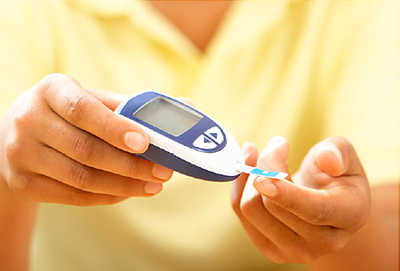My Genic Predisposition of Diabetes has been one mind blowing affair. I will never forget early in my affair when my mom’s glucose levels fell drastically I turned into a nervous rack! I ran to the kitchen to grab some juice, on the way to her room tripped and fell in the entrance hall, wasted the juice, got up turned around ran back to get more…I felt like one of the three stooges. Good thing she had peppermint candy by her bed side to eat because her nervous daughter was playing dropsy with the floor.
As far back as Moses (yes, I am taking you there), Glucose has been used as a source of fuel as it was provided to the children of Israel as they made their long journey from Egypt to the “promise land” in the form of “Manna” which was a type of carbohydrate (wafer) substance. “Oh” let’s not forget about those Dallas “Cowboys” or any player of high endurance sports, prior to game day they all Carbohydrate Load. We have already discussed how carbohydrates turn into glucose which is the muscles main source of fuel. Note, even I tend to get weak at the knees and fall out when my levels get too low. At any rate, when an athlete carbohydrate load, their body will store up all the excess glucose from the carbohydrate loading process in the liver in the form of glycogen, and as the athlete runs or exert their muscles which are being fueled by glucose, the liver consistently releases the stored glucose into the blood stream constantly pumping it into the muscles cells, thus, endurance/fuel is provided throughout the game. But don’t forget Glucose needs INSULIN to deliver it into the muscles, and the Pancreas makes INSULIN. No matter how much Glucose you have in your blood stream if the pancreas does not release INSULIN, glucose will never get to your cells (organs).
So how do we repair our fuel pump when it breaks? In your car, you take it to the repair shop, in your body you go to your physician. Depending on the degree of damage your pancreas has exhibited, will determine the course of the repairs. To be made:
The Pancreas Repair Shop
- If your glucose levels are just slightly elevated (prediabetic stage) the pancreas is still putting out Insulin and the first course of repairs is, DIET + EXERCISE
Action: (1) Control the amount of glucose provided by diet CHO adjustments; (2) Initiate exercise programs, which will use the excess glucose flowing in your blood stream as fuel for the muscles resulting in lower glucose levels.
- If your levels remain elevated with Diet + Exercise your physician may prescribe a medication call Metformin (Glucophage) or the newer class Rx such as Sitagliptin.
Action: (1) Glucophage prohibits the liver from making additional glucose and delivering it to the blood stream. (2) Stimulates your muscles to become more sensitive to glucose to absorb more glucose to use as fuel. End results: reduce circulating blood glucose.
If your levels remain elevated with Diet + Exercise + Glucophage, your physician may add oral hypoglycemic pill called Sulfonylureas i.e. (Glucotrol) there are various types on the market. Action: Hypoglycemic pills increase release of insulin from the pancreas. When more insulin is released, more glucose will be taken out of the blood stream and delivered into your cells (muscles, liver etc.)
- If levels remain elevated with Diet+ Exercise+ Glucophage+ Hypoglycemic pills your physician may introduce Insulin injections. Action: At this junction
the pancreas is putting out very little insulin to the point of having to inject insulin. Injectable Insulin mimic as nearly as possible your natural insulin. There are various forms which will be prescribed based upon your glucose elevations.
- After this stage if levels are not brought into normal range, injected insulin will be the primary mode of treatment (along with other medications), the fuel pump which is Insulin is not being secreted/the pancreas has shut down production, to the point where Insulin, must be provided solely by another source to move the glucose into the cells (MDI) Multiply Daily Injections. There are different types of injectable insulin such as:
Fast Acting, Rapid Acting, Long Acting, Intermittent, Basal Insulin, along with other medication to improve the absorption of insulin within the cells.
Remember the whole purpose of controlling diabetes is to maintain glucose levels within the blood stream to as near normal range as possible. When levels are above the normal range damage occurs to the cells/organs of the body classically known as Complications of Diabetes.
Normal Values Diabetic Goals
Normal Fasting Glucose: 70-100 mg/dl Diabetic Fasting Glucose: 70-130mg/dl
Two hours after Meal 90-140 mg/dl Diabetic 2 hours after meal: 160-180mg/dl
Normal A1C: 4% to 6% Diabetic A1C: <7%
What do you do with broken Fuel Pumps? You fix them as quickly as possible.


Recent Comments